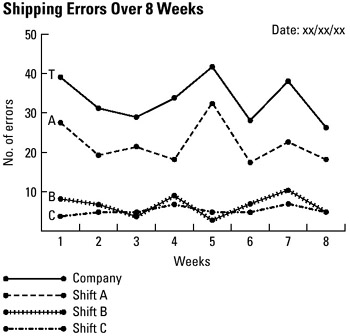Understanding Statistical Tools and Techniques
STRATIFICATION
Stratification is a statistical tool used in combination with other analysis tool. When data from a variety of sources or categories lump together, it is difficult to visualize the meaning of data. Stratification technique separates the data so that pattern of the data can be seen.
Stratification is a technique used to analyze or divide a universe of data into homogeneous groups (strata) often data collected about a problem or event represents multiple sources that need to be treated separately. It involves looking at process data, splitting it into distinct layers (almost like a rock is stratified) and doing analysis to possibly see a process improvement. Stratification is related to segmentation, but it is different from segmentation.
Following procedure will be useful:
- Before collecting data, consider the information and sources of data that can have effect on the results. Plan to collect stratification information.
- After collecting data, when you plot or graph the collected data on scatter diagram or control chart or histogram or any other analysis tool, use different marks or colours to differentiate data from various sources.
- Data plotted or graphed that differentiate from each other are said to be stratified.
- Analyze subsets of stratified data separately.

Some examples of different sources that may require data to be stratified are different equipment, shifts, departments, materials, suppliers, products, days or time.
Thus, analysis of survey data can be benefited from stratification technique.
How you liked the write-up. Please post your comments. Thanks.
No comments:
Post a Comment